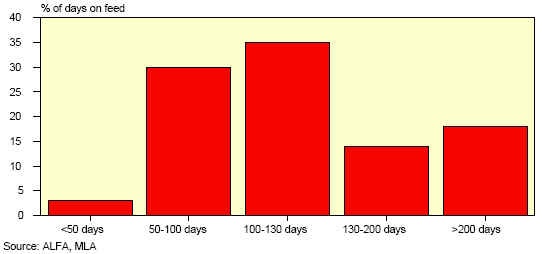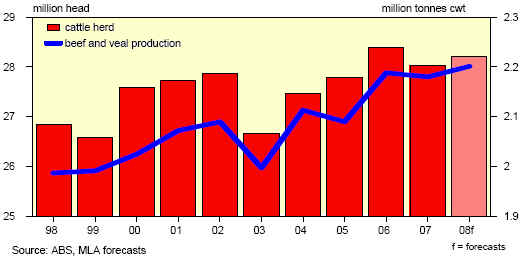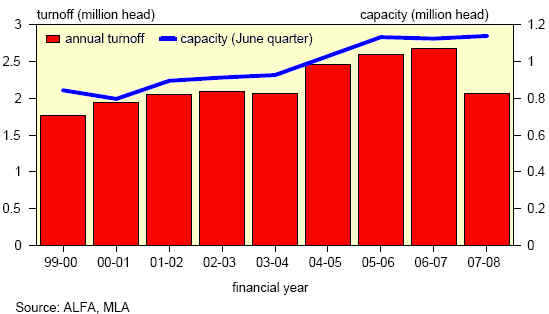



Grain Fed and Grass Fed Beef Production
Grain fed and grass fed beef is a complementary combination to fulfil customer needs and demands, writes TheCattleSite Senior Editor, Chris Harris.
The two systems work together in the Australian beef production industry making use of the available resources and providing the products that are required by consumers.
David Palmer, the managing director of Meat and Livestock Australia, speaking at the recent World Meat Congress in Cape Town, South Africa, said that the livestock industry is in the meals industry and it has to meet consumer demands regarding taste and budget by supplying appropriate products.
He said that the Australian industry supplies 106 countries around the globe and the consumer demands vary from market to market, so the Australian livestock industry has to vary its product range.
The challenge for the industry is to turn a wide range of vegetable protein into a wide range of beef offerings to cater for this diverse market range.
Mr Palmer said that there is no best way or better system for beef production as there are "many paths to many ends".
"Customers are unforgiving if the product is not meeting their consumer needs," he said. "But there is no best way."
Mr Palmer said that grain fed and grass fed systems are parallel production systems.
"It is all about managing risks and managing the seasons," he said.
In 2007-08, 26 per cent of adult cattle in Australia were finished on grain, with the remaining 74 per cent pasture fed.

Mr Palmer said that the industry is trying to educate the market about the meaning of the number of days that cattle are on feed, but in the end it is the eating quality of the beef that is the determining criteria.
The major thing that determines the length of time on feed is the Eating Quality Assured system. He added that a balance has to be struck between the availability of a cost efficient feed source and the customer requirements.
Mr Palmer said that feed costs have risen in Australia being forced up as in other countries around the world by drivers such as the demand for feed in countries such as India and China and because of the weather situation in Australia with the continuing drought and through the demands being placed in the crop market by ethanol production.
However, he said that pasture as a feed source requires land sun and water and while Australia has an abundance of land and sun, it has a problem with water because of the drought.
The introduction of feedlots has had the effect of taking the edge off the effect the drought has on pasture lands, and by using feedlots, the Australian industry has managed to increase production, despite the drought, through grain fed finishing.
In the meantime, the drought has seen a shift in production patterns in the industry moving the grass fed beef from the south to the north of the country to find water for pastures.
"Our ability to increase production despite dry seasons has historically been due to a move to grain finished or grain fed production, and Australia is getting better at managing droughts, he said."

However, Mr Palmer also called for a level playing field in the competition for grain for feed for the cattle industry and grain for the production of ethanol.
He said he was concerned about the government subsidies that were going to ethanol production and also the fact that grain being dedicated to ethanol together with import restrictions on feed grain were forcing feed prices up.
"Feed grain must be available at an affordable price and Government subsidies and mandates on ethanol lead to a distorted price," he said.
"The actions in one country are felt in all others."
He added: "Mandatory E10 petrol could result in demand for grain increasing by 6.1million tonnes by 2015 and mandatory E10 petrol and E15 diesel could result in a demand increase of 13.5m tonnes by 2015."
This all results in a reduced grain fed turn off, Mr Palmer said.

However, he added that an improved eating quality in both grain fed and grass fed beef has been the result of better standards and consistency of product. He said that while the consumer takes food safety and the integrity of the product as non-negotiable, science has helped to improve the quality of grass fed beef.
This has led to a 60 per cent rise in consumer spending on domestic beef.
Mr Palmer concluded that multiple supply systems deliver a wide range of products to billions of consumers across the globe and the use of these grain fed and grass fed systems is dependent not only on available resources but also customer requirements.
All these systems play an essential role in meeting customer requirements, he said.


